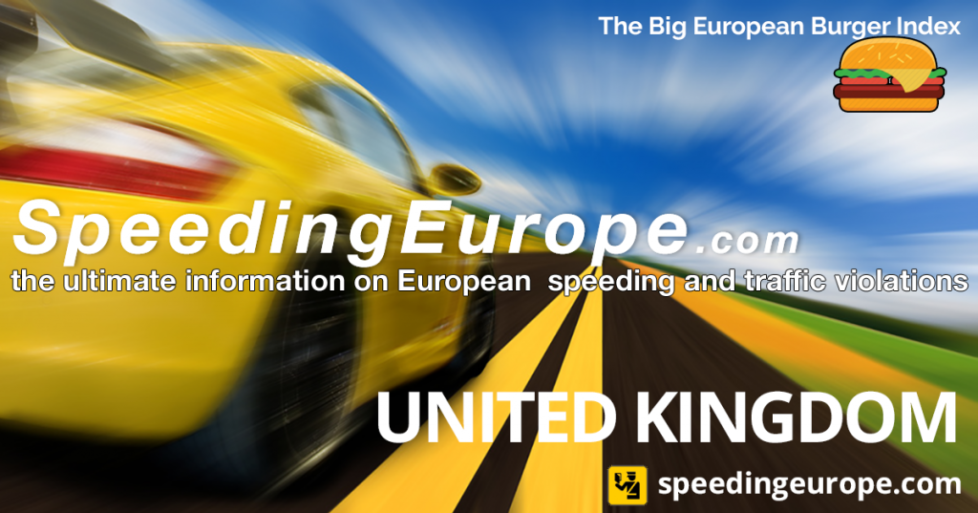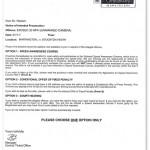
Last update 7.7.2019 | First published 24.5.2004 | €1 = £0.85
According to British media the surveillance is everywhere. And the fines may run high – even by European standards.
| 0.8‰ | €118 | €225 | €120 | €85 |
| Important numbers : | |||
| Limit – km/h (mph) | 48 (30) | 96 (60) | 112 (70) |
| Fine +21km/h | €118 | €118 | €118 |
| Fine +41km/h | €118-1176(1 | €118-1176(1 | €118-1176(1 |
| LICENSE | 95 (60) | 145 (90) | 160 (100) |
| 1) Referral to court. See below. | |||
Member of the European cross-country fine cooperation. Any traffic fine may arrive at your home address.
Fines may automatically be shared between Austria, Chech Republic, Cyprus, Denmark, Estonia, Finland, France, Germany, Hungary, Netherlands, Latvia, Lithuania, Luxembourg, Norway, Poland, Portugal, Romania, Slovenia, Spain, Sweden and United Kingdom.
The National Police Chiefs’ Council (NPCC) suggests police forces do not prosecute until drivers exceed a margin of error of 10 per cent of the speed limit to take into account driver concentration, plus 2mph for speedometer error.
Speeding tickets and reactions are regularly discussed. For more info, you should visit Driving Ban. And Wikipedia has an interesting entry on Road speed limit enforcement in the United Kingdom. The official source on traffic penalties is Road Traffic Offences: Guidance on Fixed Penalty Notices.
A good place to get advice on what to do if you get a ticket for a motoring offense is No Penalty Points. Highly recommended.
Be aware that both fines and license withdrawals are subject to police judgement and the local circumstances (eg. act polite, take off any helmet, and beg for pardon). In addition, Great Britain offers a relatively high degree of legal protection.
The fastest convicted speeder in the UK was Daniel Nicks, convicted of 175 mph (282 km/h) on a Honda Fireblade motorcycle in 2000. He received six weeks in jail and was banned from driving for two years. The fastest UK speeder in a car was Timothy Brady, caught driving a 3.6-litre Porsche 911 Turbo at 172 mph (277 km/h) on the A420 in Oxfordshire in January 2007 and jailed for 10 weeks and banned from driving for 3 years.
source: Wikipedia
| UK in detail : | ||||
| Violation(1 | Fine(2 (GBP) | Fine(2 (Euro) | Points | |
| + 1-24 km/h (1-15 mph) | 100 | 118 | 3 | |
| + 25-41 km/h (16-25 mph) | 100-1000 | 118-1176 | 4 | |
| + 42-48 km/h (26-30 mph) | 100-1000 | 118-1173 | 5-6 | |
| LICENSE (1 month – 1 year) | + 48 km/h (+30 mph) | 100-2500 | 128-2932 | 0 |
| 1) There is a speed enforcement policy guidance, which suggests that enforcement will normally occur when a driver exceeds the speed limit by a particular margin. This is normally 10 per cent over the speed limit plus 2 mph. 2) The fine also varies between fixed penalties and a referral to court, check the table below for limits. For a Fixed Penalty, the maximum fine is £100. For a case referred to Court, the maximum is £1,000, except for motorway offences, where the maximum is £2,500. Check Speeding Fines for more on this. Please note that if you are summoned to court you will usually get an instant driving ban for between 7 and 56 days. In court each case will be looked at individually, to assess factors such as time of day, road type and conditon, weather conditions etc. The fine is now also based upon the financial circumstances of the offender, leading to payment within 12 months.Values in Euro are approximate. |
||||
| Referral to court / Instant driving ban: | ||||||
| limit: | 20 mph | 30 mph | 40 mph | 50 mph | 60 mph | 70 mph |
| speed: | 35 mph | 50 mph | 66 mph | 76 mph | 86 mph | 96 mph |
You could be disqualified from driving if you build up 12 or more penalty points within a period of 3 years. For new drivers (still within 2 years of passing your driving test) the license will be revoked when you reach 6 points.
You will find a good survey on the penalty points system at the Motor Lawyers.
 Speed Awareness Course
Speed Awareness CourseThe National Speed Awareness Scheme is an innovative scheme that has been put in place by police forces across the UK to allow motorists caught speeding to complete a workshop rather than be issued with three penalty points and a £60 fine. Check NoPenaltyPoints for details.

18.09.2018 @ 11:46
Please be aware the Scotland has lower drink driving limit than England/Wales or Northern Ireland.
Limit in Scotland in 0.5, like most of the rest of Europe.
The border between England and Scotland is always clearly marked, so you are sure when you have crossed into Scotland.
21.08.2018 @ 15:33
This is also a good website: https://www.speedingcalculator.co.uk/
30.08.2018 @ 11:47
Thank you! A link to this web is now included above.
12.08.2018 @ 14:40
A few points I would like to bring to your attention:
Speed limit in built up area is 30 MPH, identified by the presence of street lighting.
Speed limit on single carriageways is 60 MPH. Speed limit on dual carriageways (roads with a central reservation) is 70 MPH. Speed limit on motorways is 70 MPH.
The fixed penalties for speeding, overtaking over solid white lines and contravening a red traffic signal are now all £100 and 3 penalty points.
The fixed penalty for using a mobile phone while driving is now £200 and 6 penalty points.
Foreign drivers who are stopped by police are dealt with by means of a Graduated Fixed Penalty Notice, which they must pay at the roadside or have their vehicle clamped. The amount of a GFPN is identical to that of a normal FPN. If the case nerds to go to court, the GFPN is £500 and acts as a deposit to ensure the offender attends court.
The maximum fine at court for speeding on a motorway is £2500 and speeding on any other road £1000.
For any offence that carries penalty points, you may be immediately disqualified at court.
For the information about the NPCC tolerance guideline, it should be added that this is merely a guideline. You can be prosecuted for speeding at 1 MPH over the limit and no corrections need to be applied. The tolerance is used mostly for speed cameras, police officers are known to stop and prosecute drivers for lower speeds. This is particularly the case for the higher speed limits.
Enforcement is indeed widespread. Speed cameras are all painted bright yellow and are usually clearly signposted by the Speed Camera sign. Despite this it is still quite easy to miss them, particularly average speed cameras and speed cameras mounted on overhead gantries on motorways. There are a lot of speed cameras, and Europeans should note in particular that there is an increasing number of average speed cameras in urban areas to enforce 20 MPH limits. This is unheard of in mainland Europe where these limits are widely fluted. It should also be worth noting that there are many local authority operated cameras in mostly urban areas to enforce laws surrounding bus lanes, illegal turns and blocking box junctions.
Cameras can also be found in unmarked lorries that police are increasingly using on highways. From these unmarked lorries, police film drivers to capture evidence of mobile phone, driving without due care and attention and seat belt offences. They are particularly good at catching lorry drivers who use their phones. Also unheard of in mainland Europe.
Perhaps also mention that due to driving on the left, motorists from mainland Europe who use a left hand drive vehicle need to adjust their headlights. Some vehicles can do this electronically, others may need to apply a sticker to their headlights. This is because they are made to be dipped to the right, which is useful for illuminating signs when driving on the right. When driving on the left, however, they will dazzle oncoming motorists.
Failing to adjust headlights so they don’t dazzle oncoming road users may attract a fixed penalty of £100 and 3 points, or rise to an unlimited fine, points or a disqualification at court. It falls under driving without reasonable consideration for other road users. Many people forget this.
Hope this helps 🙂
02.09.2018 @ 02:45
Just checking to see if you received this
14.04.2019 @ 13:08
Thank you! And sorry for the late response .(
25.06.2017 @ 17:01
Hi Guys, I’ve just came back from Northern Ireland. It came as a big surprise for me. I did around 300 miles there. There traffic looks fine. People drive faster than in Republic of Ireland and much faster than what I’ve seen eg. around London. Nearly everybody is speeding nicely :-). I remember overtaking somebody on a two lane motorway. The limit was 70 mph there. I was going 90 mph and the in the mirror I could see a bunch of cars behing me that wanted to overtake me, because that 90 was to slow for them. I smiled and let them go immediately. I’ve seen no speed cameras and only one policeman with a laser gun. It seems that it’s not a bad place to drive.
Speend safely and don’t get caught!
26.06.2017 @ 23:22
Thanks again, Potocki!
06.06.2017 @ 09:36
There is a difference for foreign license holders, they will collect cash on the spot IF you have no UK address.
25.04.2017 @ 18:01
Seems like the “Important numbers” table hasn’t been updated to reflect the content of the “UK in detail” section.
09.05.2017 @ 11:15
Thank you – now fixed 🙂
19.04.2016 @ 10:52
Very accurate, with the exception that the Fixed Penalty fine has been increased to £100 (€125).
11.12.2015 @ 12:49
It is now a minimum fixed penalty of £100 & 3 endorsemebt points for speeding as opposed to the £75…